Published on
The temperatures are getting up there, and we’ll soon be facing the summer heat waves that have become increasingly prevalent as the climate crisis takes more and more of a toll.
AIR CONDITIONERS ARE PLANET WARMERS
Air conditioners contribute to global warming by pumping hot air back into our cities and by increasing global energy use for their operation. The vicious circle (the hotter it gets, the more air conditioners are in use, and the more air conditioners are in use, the hotter it gets) is harming the people most likely to suffer from the heat. Dr. Pierre Gosselin, a medical advisor with INSPQ (Institut national de santé publique du Québec) who manages the health program for the Ouranos group explains: [translation] “Paradoxically, when everyone turns on their AC, it jacks up the temperature in our cities by at least a degree and a half and exacerbates the effects of heat waves on those who can’t afford air conditioners.”
What can we do to get out of this impasse? Adopting ambitious climate measures, properly insulating our homes and transitioning to renewable energy sources will help us deal with the climate crisis. But in the short term, here are a few ways (most of them cost-free) to keep cool this summer without having to switch on the AC.
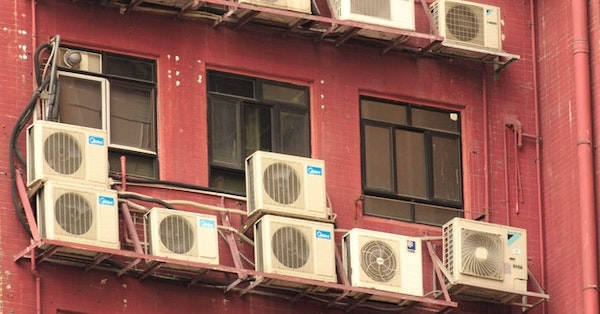
* NOTE: We understand that age and health, as well as various special circumstances, make an air conditioner a must for some people. It’s up to you, therefore, to reflect on and assess your situation before deciding to purchase an AC unit. If you decide to purchase one, you can find second hand AC units a stores that sell used items or on platforms like Kijiji and Marketplace. By buying a second hand unit, you’ll help avoid the manufacture of a new one. Other tips: opt for energy-efficient units bearing the Energy Star symbol and avoid placing the air conditioner in a window exposed to full sun.
PRACTICAL SOLUTIONS TO STAY COOL THIS SUMMER
City temperatures can sometimes be 5 to 9°C warmer than those in the country, because of [translation] “the lack of vegetation, an overabundance of asphalt, the heat emitted by vehicles” and… air conditioning (Source: Éco-Habitation). Here are a few practical tips to beat the heat (Source: Éco-Habitation and CAA-Québec):
- COOK COOL: Limit the use of your oven, stovetop and hot water tank when cooking and showering. Avoid operating the dishwasher and clothes dryer during the day. If you can, dry your clothes on the clothesline for that fresh-air smell!
- DRINK WATER AT ROOM TEMPERATURE: The sense of cooling when you drink cold water is just a sensation; it doesn’t actually cool your body. By drinking water at room temperature, your body won’t have to expend energy to regulate its temperature to 37 degrees.
- OPEN YOUR WINDOWS…SOMETIMES: Open your windows only when the outside temperature is cooler than the inside temperature, which is usually at night.
- COVER YOUR WINDOWS: During the day, block out the sun and heat with shutters or opaque, light-coloured blinds or curtains. Windows facing “South or Southwest (…) are responsible for about 40% of the sun-generated heat in your home.” (Source: CAA-Québec). You could also install sun-control films in your windows, which can reduce heat induction by up to 75%.
- HELP THE AIR CIRCULATE: Though fans can’t cool a room, they help circulate the air and create a refreshing breeze. If installed near a window and run at night, they will pull cool air into the room.
- GO GREEN: Climbing plants and vines help prevent exposed walls from storing heat. Inside, evapotranspiration from plants will help cool your rooms. Like human sweating, this process regulates the plants’ interior heat.
- INSULATE PROPERLY: If your home is not well insulated, areas where cold air seeps in during the winter will also let in hot air and humidity in the summer. Check window and door frames, around electrical and plumbing systems and ventilation ducts.
- CHOOSE LIGHT-COLOURED EXTERIOR CLADDING: “Up to a third of the heat captured by a building can be transferred to its interior by conduction.” (Source: CAA-Québec). When it comes to your roof or exterior walls, opt for pale colours that will reflect a large part of the undesired heat, or better yet, opt for a green roof!
- AVOID CONCRETE AND ASPHALT: They become radiators and create heat islands.
- INSTALL SHADE SCREENS: Also known as sun screens, they create shade and can make a big difference when installed above south-facing windows. Good old-fashioned shutters (when closed during the day) can also do the trick quite nicely!
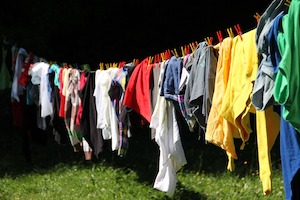
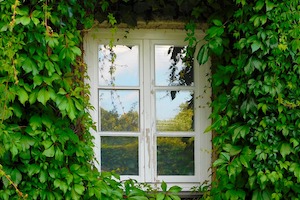
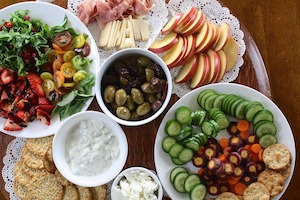
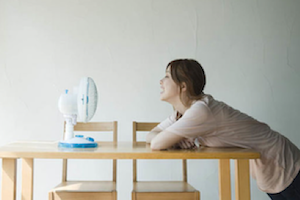
- CHOOSE ELECTRIC APPLIANCES THAT DON’T EMIT A LOT OF HEAT: Energy efficient electric appliances (bearing the Energy Star label, for example) can reduce the heat produced inside your home, compared to inefficient electrical appliances (which often have halogen bulbs).
- PUT YOUR DEVICES ON SLEEP MODE: Portable devices, such as laptops, emit a great deal of heat. To reduce the heat, put your portable devices on sleep mode.
- DEHUMIDIFY: Use a portable dehumidifier for single room (closed off from the rest of the house and from the outside) to reduce humidity levels.
- MAKE THE AIR SWEAT: In a dry (low-humidity) heat, string up a damp cloth in front a fan, in front of where your air comes, or lightly moisten your curtains. The idea behind this: When water evaporates, it draws out a lot of latent heat to change phases, and in so doing it removes it from the ambient environment.
- INSULATE YOUR ROOF AND ATTIC: To avoid having a radiator above your head! A green solution for insulating the roof and attic: blown-in cellulose. Made of shredded paper fibre, cellulose prevents warm air from escaping in winter by retaining radiant heat. And in summer, its high thermal capacity helps ensure comfort by limiting daytime overheating. Cellulose also offers excellent resistance to fire, vermin, humidity and mold, as well as quality acoustic insulation.
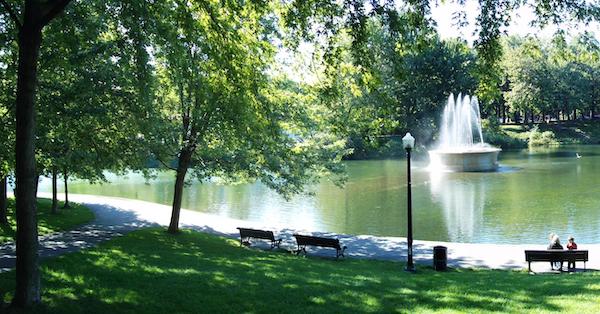
AVOID HEAT ISLANDS
Would you believe that a temperature of 21.8°C was recorded on Mont Royal at the same time as a temperature of 33.5°C was recorded less than 12 km away at the corner of Saint-Laurent (Source: Le Devoir)?
To chill out this summer, visit a park, wooded area, pool, or a museum or library for that matter. Don’t forget to hydrate with your reusable water bottle and to eat fresh fruit and vegetables - ideally local and organic ;)
The entire Équiterre team wishes you a wonderful, comfortable and green summer!
For more information:
- Rafraichir son habitation sans la climatiser, Éco habitation, June 7, 2019
- Climatiser sa résidence sans trop de frais, CAA Québec,
- La «clim» des riches menace la planète, Le Devoir, July 14, 2015
- Le paradoxe des climatiseurs qui réchauffent la planète, La Presse, May 15, 2018
- Où fait-il le plus chaud à Montréal… et le plus frais?, Radio-Canada,
- 66 décès liés à la canicule à Montréal lors de l’été 2018, Le Devoir, May 16, 2019




